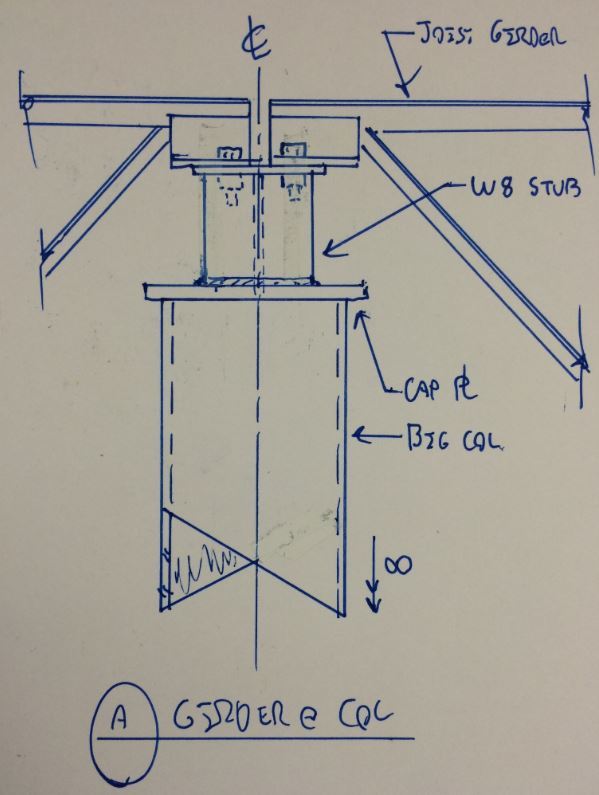DETstru
Structural
- Nov 4, 2009
- 395
I am proposing on a single story industrial project that will have 80' tall unbraced steel columns. The roof structure will be metal deck supported by joists and joist girders on 50' bays. Top of roof will be approximately 80' above top of slab. No mezzanines.
I want to get a sense of what these columns will be before I send my fee. I know I'll likely need to deal with splices and fairly large sections.
The joist girders will sit on top of column cap plates. I don't worry about eccentricity when you have a joist girder bearing on top of the usual HSS8x8 or 10x10 column since it's a small section. In this case, I'm wondering if it's warranted to assume some amount of eccentricity (with unbalanced loading situations) since the column sections will probably be 14x14 or larger and they're just so darn tall. The joist girder will still be on top of the column but maybe assume a few inches of eccentricity? See attached sketch.
Any opinions on whether I should assume some eccentricity for unbalanced load situations or thoughts on tall columns would be appreciated.
I want to get a sense of what these columns will be before I send my fee. I know I'll likely need to deal with splices and fairly large sections.
The joist girders will sit on top of column cap plates. I don't worry about eccentricity when you have a joist girder bearing on top of the usual HSS8x8 or 10x10 column since it's a small section. In this case, I'm wondering if it's warranted to assume some amount of eccentricity (with unbalanced loading situations) since the column sections will probably be 14x14 or larger and they're just so darn tall. The joist girder will still be on top of the column but maybe assume a few inches of eccentricity? See attached sketch.
Any opinions on whether I should assume some eccentricity for unbalanced load situations or thoughts on tall columns would be appreciated.

![[idea] [idea] [idea]](/data/assets/smilies/idea.gif)
![[r2d2] [r2d2] [r2d2]](/data/assets/smilies/r2d2.gif)
